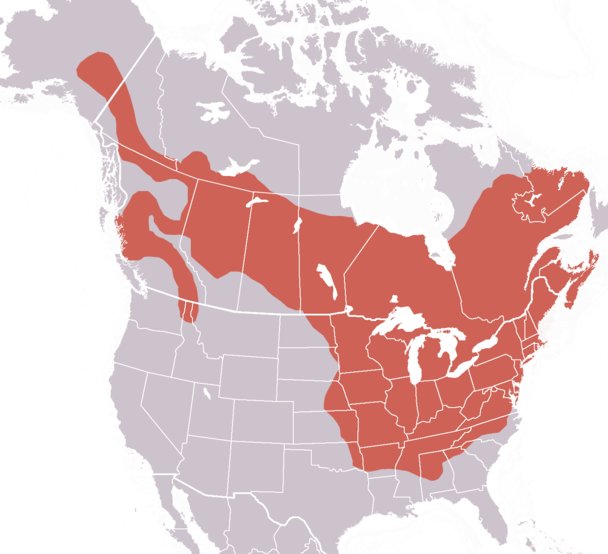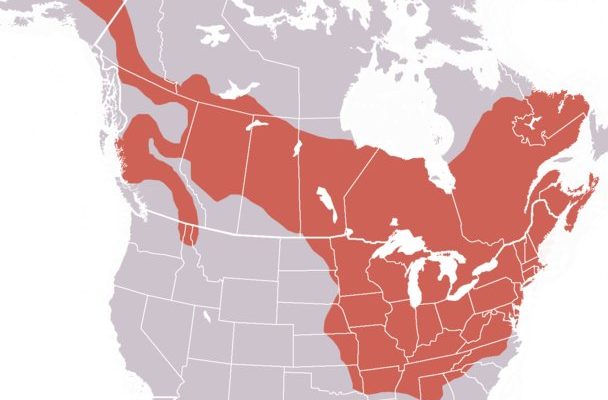
Groundhogs are fascinating beyond just their tendency to predict the weather! They thrive in diverse settings, and their living arrangements play a crucial role in their survival. In this article, we’ll dive deep into the habitats and distribution of groundhogs, exploring where they live, how they adapt, and why it matters to understand their environment.
Groundhog Habitat: A Closer Look
Groundhogs are expert diggers and typically create extensive burrow systems. These tunnels can be over 30 feet long and include various chambers for sleeping, storing food, and even bathroom areas. The burrows offer safety from predators, like hawks or coyotes. If you think about it, it’s like having a hidden fortress underground!
You’ll often find these burrows in fields, open woodlands, and even along roadsides. Groundhogs prefer areas with plenty of vegetation since they’re herbivores. They love munching on grasses, fruits, and vegetables, which is why your garden might become a target if groundhogs are nearby. Imagine a furry little friend sneaking into your backyard for a snack—it’s all part of their daily routine!
The location of groundhog habitats varies based on climate. They’re primarily found throughout North America, from Canada down to the eastern United States. This wide distribution means you might encounter them in a range of environments, from rural areas to suburban neighborhoods.
Climate and Geography: The Ideal Groundhog Home
Groundhogs favor temperate climates, which offer the seasonal changes they need for hibernation. They typically emerge from their burrows in early spring to start foraging for food. Interestingly, they’re well adapted to their environments. If you live in an area with distinct seasons, you might see groundhogs bustling around as the weather warms up.
While groundhogs can be found in various geographical locations, they thrive in regions with ample food sources and minimal disturbances. Fields, meadows, and areas near roads or agriculture provide perfect setups for these critters. Since they tend to avoid dense forests or heavily populated urban areas, you’ll most often spot them in open spaces where they can easily spot danger and access food.
Here’s the thing: while they’re not picky about their location, groundhogs do need specific conditions. A good mix of grass, clovers, and shrubs is essential for their diet, and they prefer to live close to their food sources. It’s like living near an all-you-can-eat buffet!
Social Structure of Groundhogs: Living Alone or in Groups?
When it comes to social structure, groundhogs are primarily solitary animals. Male groundhogs establish their territories and are typically the first to emerge from hibernation in search of food and mates. You might be surprised, though—during breeding season, which occurs in early spring, they can be a bit more social and interact with others.
After mating, female groundhogs are responsible for raising the young, or kits, mostly alone. They create separate burrows for nesting and protecting their little ones. This protective behavior is crucial, as the young groundhogs are vulnerable to predators until they’re big enough to fend for themselves. Imagine the mom groundhog carefully leading her kits to safe areas—it’s a heartwarming scene!
While their independent nature seems to suggest they prefer solitude, some groundhogs may share burrow systems, especially if food is abundant. These shared spaces can help them conserve energy during the cold months, as they snuggle together for warmth during hibernation.
Why Groundhog Habitats Matter to Ecosystems
Understanding where groundhogs live isn’t just interesting; it’s crucial for maintaining healthy ecosystems. Groundhogs contribute to their habitats in significant ways. Their burrowing activities aerate the soil, which benefits plants and other organisms in the area. It’s like nature’s little gardening service!
Moreover, groundhogs serve as prey for various predators, including foxes, eagles, and coyotes. They play a vital role in the food chain. Their presence can indicate a healthy ecosystem, signaling that predators are nearby and that the environment supports diverse wildlife.
Let’s not forget about their impact on agriculture. While they can be pesky in gardens, groundhogs also help control plant populations. By feeding on certain plants, they actually contribute to biodiversity, indirectly promoting plant growth. It’s a delicate balance, and understanding their habitats helps us appreciate their role in nature.
Factors Affecting Groundhog Distribution
Several factors contribute to where groundhogs thrive, and understanding these elements gives insight into their habitat preferences. Land use, urban development, and agricultural practices can all influence groundhog populations. For instance, expanding urban areas may push groundhogs into smaller, fragmented habitats.
Climate changes also play a role. With shifting temperatures and unpredictable weather patterns, groundhogs might adapt their behaviors or shift their ranges to find suitable habitats. If spring arrives earlier or later than usual, it could affect their hibernation cycles and food availability. It’s a constant dance with nature, and they must be adaptable to survive.
Natural predators and competition with other species are critical too. If a new predator enters their environment, groundhogs may need to find new burrowing locations to stay safe. This shifting landscape can challenge their survival, showing just how interconnected ecosystems are.
How Do Groundhogs Prepare for Hibernation?
Hibernation is one of the most fascinating aspects of a groundhog’s life cycle! As winter approaches, groundhogs prepare by fattening up, munching on as much food as they can find. During late summer and fall, they’ll go into a feeding frenzy, making sure they have enough stored energy to last through the cold months.
Their burrows serve as snug little bedrooms for hibernation, insulated from the harsh winter weather. Groundhogs typically enter a state of torpor, slowing their heart rates and reducing their body temperatures to conserve energy. It’s like hitting the snooze button for months!
During this time, their metabolism slows down, and they rely on the fat reserves they built up during the feeding season. It’s a remarkable survival strategy that allows them to ride out the winter without having to venture out for food. When the warmth of spring arrives, they’ll emerge from their burrows, hungry and ready to greet the new season.
Understanding where groundhogs live and how they adapt to their environments shines a light on their fascinating lives. Their extensive burrow systems, solitary habits, and crucial roles in ecosystems make them more than just adorable critters popping up on a sunny day. By appreciating their habitats, we can better understand the importance of preserving their environments.
So next time you see a groundhog peeking out from its burrow, remember that it’s not just enjoying the sunshine; it’s part of a complex web of life that connects us all. Groundhogs and their habitats teach us valuable lessons about nature, adaptability, and the balance of ecosystems. Embracing this knowledge allows us to appreciate the outdoors even more and protect the homes of these furry friends.

